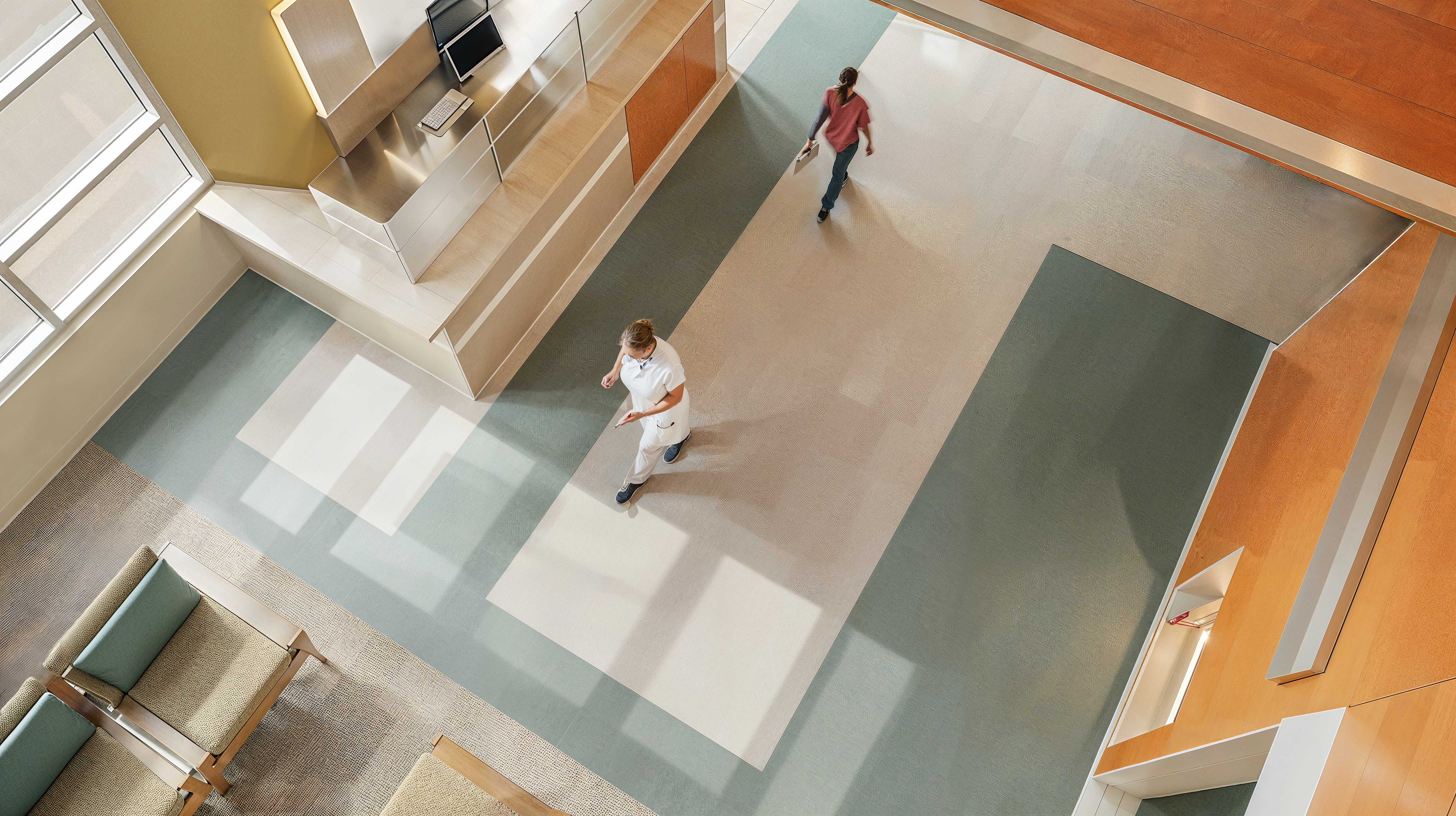
In the high-pressure, critical-paced world of healthcare, the physical demands placed on doctors, nurses, and support staff can be just as overwhelming as the mental. Frequently spending long hours on their feet while navigating immense stress, these individuals are providing critical care and ensuring the smooth operation of a vital community service. As healthcare institutions strive to improve the well-being of their employees while attracting new talent, one element that can make a significant impact is anti-fatigue flooring. This specialized flooring is designed to reduce muscle strain and joint discomfort associated with prolonged standing. Combining comfort with durability and hygiene, anti-fatigue flooring improves staff performance and enhances the overall design of healthcare spaces.
Healthcare workers frequently spend 8 to 12 hours on their feet, with minimal opportunities to rest. Over time, continuously standing on hard surfaces such as concrete or ceramic tiles can cause significant strain on the feet, legs, and lower back, leading to fatigue, discomfort, and even chronic musculoskeletal problems. Anti-fatigue flooring is designed to combat these issues by providing a softer, cushioned surface that promotes subtle movements, encourages blood circulation, and reduces stress on the body.
Rubber is one of the most popular materials used in anti-fatigue flooring due to its elasticity and durability. It provides a high level of cushioning and bounce, reducing the impact on joints while also being slip-resistant. Rubber flooring is also easy to maintain and clean, making it an excellent choice for high-traffic healthcare settings. Rubber’s non-porous nature helps prevent the buildup of bacteria and mold, supporting infection control measures in critical areas such as operating rooms, labs, and intensive care units. Its flexibility makes it adaptable to different design aesthetics, with a variety of color and texture options to complement the overall look of the space.
Vinyl flooring offers a versatile and affordable option for anti-fatigue surfaces. Known for its durability and ease of maintenance, vinyl can be engineered with a cushioned backing that provides anti-fatigue properties. Vinyl is water-resistant, making it suitable for healthcare environments where spills or moisture are a concern. With advancements in technology, vinyl flooring can mimic the appearance of natural materials like wood and stone, allowing for an aesthetically enhanced look that delivers on comfort. Vinyl’s smooth surface is also ideal for fast and thorough cleaning, ensuring that hygiene standards are upheld in busy hospital environments.
Modular anti-fatigue flooring is composed of interlocking tiles or sections that can be easily assembled and customized for specific areas. This type of flooring offers flexibility in design and installation, making it an excellent choice for healthcare facilities that utilize adaptable spaces. These tiles are often made from rubber, vinyl, or other resilient materials, providing the same cushioning and comfort as traditional sheet flooring but with the added benefit of being replaceable in smaller sections. Modular flooring systems also allow for specific design choices, including color coding or creating zones within a facility to aid with wayfinding or designating areas for specific activities.
Resilient flooring refers to materials like rubber, vinyl, or linoleum that offer flexibility and durability while maintaining a degree of softness. These materials absorb shock and cushion the feet, making them ideal for spaces where workers are on their feet for extended periods. Resilient flooring is especially beneficial in high-traffic areas such as emergency rooms, nursing stations, and hallways, where staff need the support of anti-fatigue surfaces to stay comfortable and focused. Known for its resistance to wear and tear, resilient flooring can withstand heavy foot traffic, equipment movement, and cleaning chemicals, making it a highly durable option in healthcare settings.
While anti-fatigue flooring is often associated with hard surfaces, it is possible to enhance comfort under carpeting as well. In healthcare settings where carpeting is preferred for sound absorption or aesthetic reasons, specialized underlayments can be added to provide the cushioning and shock absorption needed for anti-fatigue benefits. These underlays are typically made from rubber or foam and can significantly improve comfort without sacrificing the visual appeal of carpeting.
Through reducing healthcare worker discomfort, anti-fatigue flooring contributes to a healthier, more productive workforce. Staff who feel physically supported by their environment are more likely to perform at their best, experience fewer injuries, and stay engaged throughout long shifts. In turn, this leads to improved patient care and a more positive workplace culture. Whether made from rubber, vinyl, or resilient materials, these flooring solutions offer ergonomic support while maintaining infection control standards and enhancing the overall design of the space.
Read more about materials that work well in the healthcare space with our article on Oeko-Tex Fabrics.








